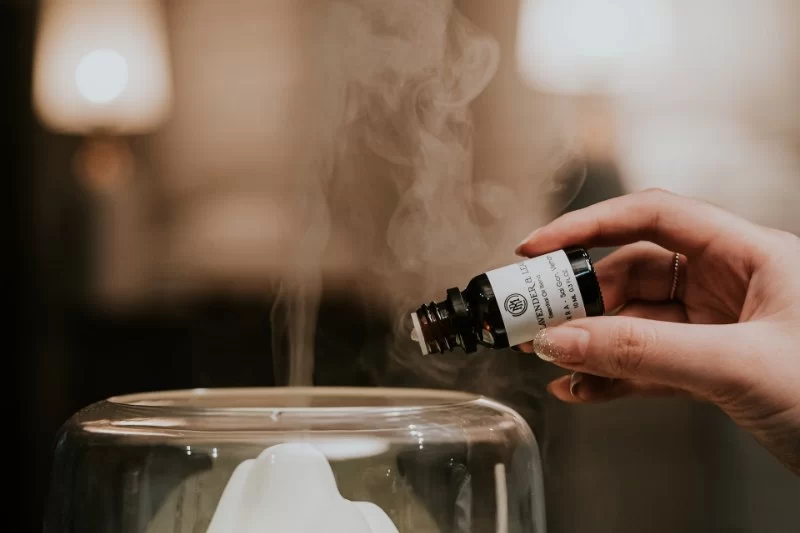- why‑using‑essential‑oils‑safely‑matters
- 1‑understanding‑dilution‑and‑purity
- 2‑choosing‑safe‑application‑methods
- 3‑common‑essential‑oils‑and‑their‑effects
- 4‑avoiding‑skin‑irritation‑and‑allergic‑reactions
- 5‑integrating‑oils‑into‑daily‑routine
- real‑life‑case‑using‑essential‑oils‑safely
- getting‑help‑from‑scent‑snob
Why Using Essential Oils Safely Matters
Essential oils—highly concentrated plant extracts—offer powerful benefits like mood uplift, relaxation, and natural relief from minor discomfort. But because they’re potent, improper use can lead to skin irritation, respiratory upset, or worse. Understanding how to use essential oils safely and effectively is key, especially for beginners. Whether you’re trying lavender for sleep or peppermint for headaches, following safe practices protects your health and ensures you experience benefits without side effects.
1. Understanding Dilution and Purity
A foundational tip in this complete beginner’s guide to using essential oils safely and effectively is proper dilution. Pure essential oils should never be applied directly to skin. Instead, dilute them with a carrier oil—such as fractionated coconut oil, jojoba, or sweet almond—at a ratio of 1–2% for topical use (about 6–12 drops per ounce). Higher dilutions are needed for children or sensitive skin. Also, check purity: many essential oils are adulterated. Stick to reputable brands with GC/MS testing. At Scent Snob, we highlight oils verified for purity and label transparency so you know exactly what you’re applying.
2. Choosing Safe Application Methods
How you use essential oils matters as much as what oils you choose. Common methods include:
- Aromatherapy diffusion using a diffuser or nebulizer, ideal for mood or relaxation benefits.
- Topical application
- Steam inhalation
Some oils should never be ingested unless under professional guidance—especially for children, pregnant women, or pets. This guide emphasizes safe methods to ensure you use essential oils effectively without risky exposure.
3. Common Essential Oils and Their Effects
Many beginners wonder which oils work best. Here are staples and safe tips:
Lavender
Gentle and calming—excellent for sleep, stress relief, and minor skin irritation when diluted.
Peppermint
Cooling and energizing—use diluted on temples or wrists for headaches. Avoid near young children's faces.
Tea Tree
Antimicrobial—used in low dilution for minor skin concerns. Patch test first as some skin types show sensitivity.
Eucalyptus
Helpful for respiratory support—use diluted or in steam inhalation. Not for young children or pets.
By matching each oil to your purpose and understanding safe dosage, you use essential oils effectively—and with confidence.
4. Avoiding Skin Irritation and Allergic Reactions
Patch testing is a must. Apply diluted oil on inner forearm, cover with a bandage, and wait 24 hours. If irritation or redness appears, discontinue use. Some oils like cinnamon, oregano, or clove are naturally irritant and require very high dilution—or are best avoided altogether. Keep oils away from eyes and mucous membranes. Store essential oils properly, sealed and out of heat and light, to preserve integrity and reduce risk of oxidation.
5. Integrating Oils into Your Daily Routine
Using essential oils safely and effectively means making them part of your routine—not just a one-off experiment. Simple ideas include:
- Diffusing lavender in the evening before bed.
- Adding a drop of peppermint to water (in a diffuser bottle) for a midday boost.
- Using a diluted blend of chamomile and cedarwood as a pillow mist.
- Blending lemon and rosemary for a cleaning spray—non-toxic and fresh-smelling.
Tracking how your body reacts over days helps refine what works best. Gentle daily use often yields better results than heavy initial dosing.
Real-Life Case: Using Essential Oils Safely and Effectively
Emma, a first-time essential oil user, experienced stress and sleepless nights during remote working. She followed this beginner’s guide: started with a 1% lavender dilution in jojoba oil, diffused it at bedtime, and applied a drop to her wrists. Within a week, she reported falling asleep faster and feeling more rested. She added peppermint to a linen spray for post-lunch energy. When she accidentally applied tea tree undiluted and noticed redness, she realized the importance of dilution. By testing and adjusting, she learned how to use essential oils safely and effectively—and transformed her daily wellness routine.
Getting Help from Scent Snob
If you’re exploring essential oils for the first time, Scent Snob provides curated beginner kits that include dilution charts, safety cards, and blends matched to common goals like relaxation, focus, or sleep. Their editorial guides explain safe application, purity standards, and brand transparency. For any questions—like which carrier oil to choose or how to test for sensitivity—they offer expert support so you can use essential oils safely and effectively from day one.
By following this complete beginner’s guide, you can use essential oils safely and effectively—enjoying benefits from mood uplift and restful sleep to natural household care. With proper dilution, application methods, and reliable brands, essential oils become a trusted ally in your wellness toolkit.


0 comments